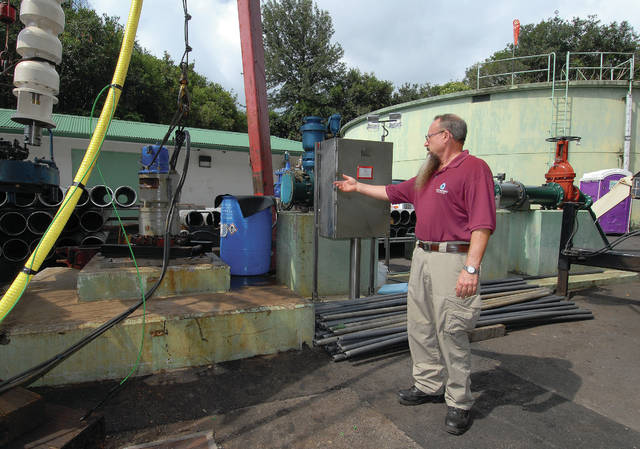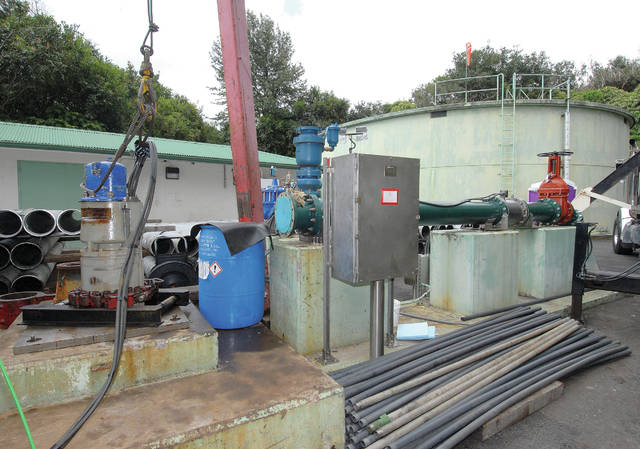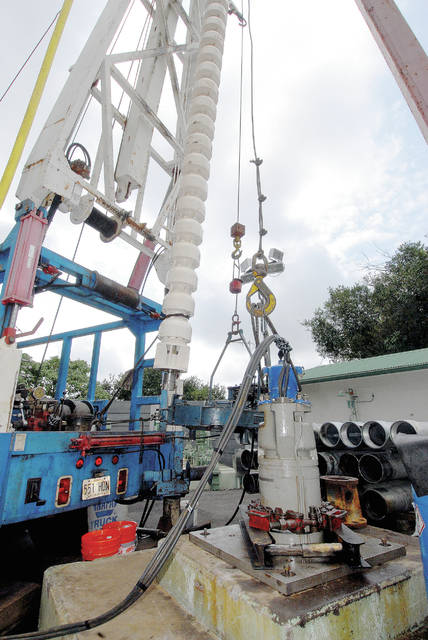HILO — Mayor Harry Kim on Wednesday signed a proclamation declaring a state of emergency to ensure the county can react quickly to water well breakdowns in West Hawaii.
“The emergency proclamation, which was officially signed today, was initially intended to be completed in August,” Kim said in a statement. “The purpose of this proclamation is to ensure that all administrative readiness is established by the county in the event that assistance will be needed from the state government.”
The state of emergency allows the county to skip competitive bidding for contractors, parts and equipment and to tap into the county emergency fund for additional money.
In addition, it allows the county to, if necessary, ask the governor for a higher-level state of emergency that could bring in the Hawaii National Guard to help, Kim told the newspaper. The National Guard could, for example, truck in water for those areas needing it.
Keith Okamoto, manager/chief engineer for the Department of Water Supply, said the department is fast-tracking repairs by making frequent phone calls to equipment suppliers, sending freight by air when possible and using emergency procurement exemptions that allow the department to skip the lengthy competitive bidding process.
The department is also searching the United States for compatible equipment in case it’s needed in a hurry, he said.
“There’s a lot of background work being done,” Okamoto said.
Two of the five malfunctioning water wells should be back in service before the month is out, and a third should be operational by the end of October, Okamoto told the County Council Committee on Agriculture, Water and Energy Sustainability.
In the meantime, the Water Board has scheduled a special meeting for 10 a.m. Sept. 13 at the West Hawaii Civic Center to discuss setting up a task force of Water Board members and experts from the public and private sector to seek “out of the box” solutions to the series of breakdowns plaguing the water department.
Council members, and a few members of the public, expressed impatience with how long the well problems, which began early this year, are lingering.
“It is time to make some harsh recommendations to the powers that run our water supply and not sit back and put our citizens at risk,” said Mitchell Verduzco in written testimony.
Kona Councilman Dru Kanuha and North Kona Councilwoman Karen Eoff are asking for an audit to determine what happened and how to keep it from happening again. The council has no authority over the water department, which is run by a semi-autonomous board. But council members can direct the legislative auditor to take a look.
Committee Chairman Tim Richards, who represents Kohala, said there couldn’t have been a worse set of circumstances coming together to bring about the current result. It’s like a “bad TV movie,” he said.
“We’re not quite on the knife edge, but we’re very close,” Richards said.
Another testifier saw the problems as a learning opportunity.
“I hope this emergency will lead to comprehensive changes in county water policy,” said Cory Harden, testifying from Hilo. “One reason pumps for deep-water wells are failing is that sucking through a really long straw is hard work. We need to change our focus from pumping more water to using less water.”
There are 13 wells serving the area. Among the eight operational wells, several of the makai wells are being tapped, replacing some of the water usually drawn from mauka deep-water wells. That means the water may have more sodium than usual, Okamoto said. It’s still within safe levels, he added.
Okamoto praised water users for cutting back on their water use to the point that no one has gone without. Water use has dropped to 8 million gallons a day, down from the 11 million gallons a day that’s average. The system, because it was built with redundancy as a design goal, can put out 22 million gallons a day.
The department checks tank levels twice daily and so far, levels have stayed stable.
“I thank the community,” Okamoto said. “They have done their part to reduce their water use.”
A water restriction, allowing water use only for drinking, cooking and hygiene, remains in effect. The public has also been ordered to cease washing vehicles and marine vessels, with the exception of 15-minute washes of boats used for business purposes. All noncommercial irrigation is also banned, except minimal hand watering of “precious plants.”
People with questions about the restrictions can call the department at 961-8060 or 961-8790 after business hours.















